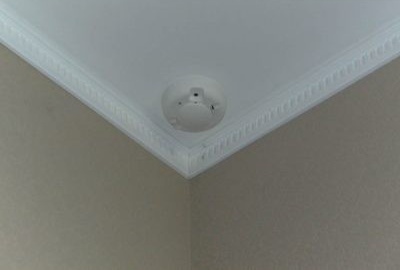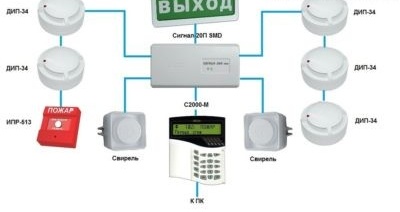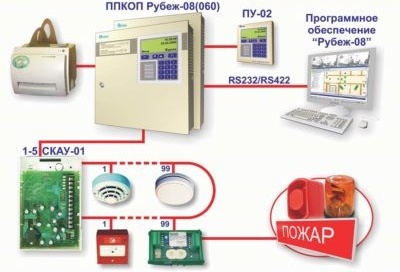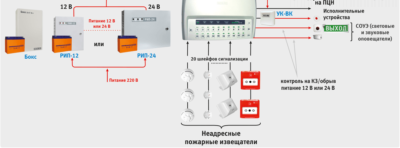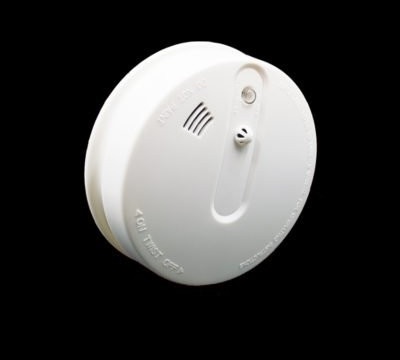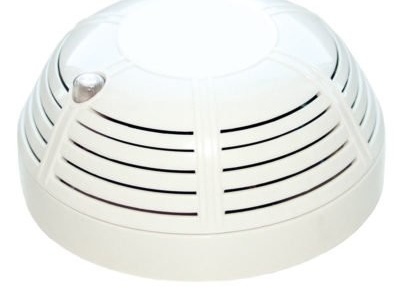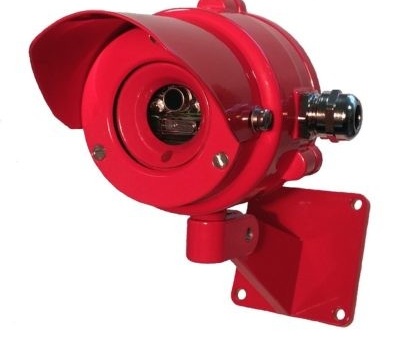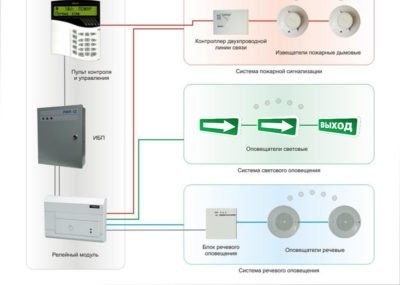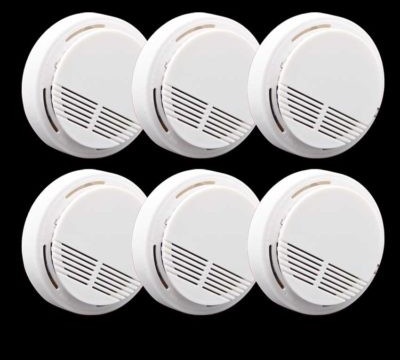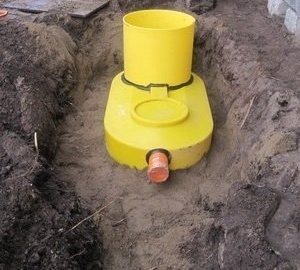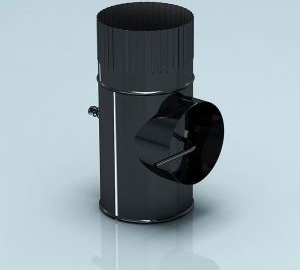Installation of fire alarm for the home: installation features

Fire and security systems are in demand and are used at a variety of sites. The complexes are distinguished by functionality and are presented in a wide variety. Therefore, before installing an alarm, it is best to know the features of different types of equipment.
Content
Alarm and its principle of operation
The security and fire complex consists of equipment allowing timely detection and notification of danger. The key element is sensitive sensors. They respond to fever, smoke, notifying the owners of a fire. An automatic fire extinguishing system is activated, a sound signal of danger. So the equipment allows you to save life and property.
The complex of devices includes sensory devices, which are presented in the form of sensors and detectors. Processing of information received from sensors is carried out by other devices, and the control unit allows you to control the operation of the system. The range of devices also includes peripheral components that are connected to the control panel:
- control panel;
- printer for printing messages;
- sound and light annunciators;
- short circuit isolation module.
All devices interact with each other, providing timely warning of the home owners about the danger. The system configuration may differ in functionality, the type of elements used, but the security and fire system works as efficiently as possible with proper configuration.
Project and calculation
For the arrangement of the security and fire complex system in the room, the correct project is important, which allows you to create a complex that meets the established requirements. A single standard assumes that the system complies with the basic standards, which is necessary for the correct and effective operation of the alarm system. Designing is an important milestone. An inspection of the premises is carried out, and in this process the specialist receives the information necessary for calculating the parameters. And also design involves taking into account the following GOST requirements:
- conductive outer or inner pipes are designed according to the ring method.Conductive installations can be deadlocks, but only for control units in an amount of less than three. The length of the outer wire of a dead end type should not exceed 200 m;
- to pipelines providing power to the fire extinguishing system, it is impossible to connect sanitary-technical or production, sophisticated equipment;
- pipelines are attached to the main structural elements of the house, but are not a support for other structures;
- the estimated volume of water for the fire extinguishing system must be stored in water tanks, but it is important to provide for the presence of devices that impede the flow of liquid to other needs;
- the period for filling the calculated volume during local extinguishing may not exceed 180 s.
When calculating, it is worth considering that one sensor monitors a square in space with sides equal to the ceiling height, but not more than 4 m. Design and calculation of systems are carried out taking into account the requirements of GOST R 50800, as well as GUESTS 3262. An airbag 88–2001 is often the main document according to which equip a complex of pipelines.
Fire Alarm: System Types
There are basic types of security and fire alarms that differ in parameters, functionality and installation rules. Complexes of various difficulty levels are necessary for warning of a fire and differ in the principle of action.
Conventional Fire Alarm
A non-address system involves the use of control panels that measure the current in the alarm loop with detectors installed. These elements can be in the states: “fire” or “norm”. If a fire is detected, then the internal resistance and the current in the system loop abruptly change in the detector. As a result, an emergency alert is generated.
Address-analog complex
In this set of equipment, the control panel (PKP) is a monoblock with one or more loops. They have a ring structure. At the same time, up to 200 elements can be easily connected to one loop. The ring complex includes the following components:
- addressable automatic fire detectors;
- addressable manual fire detectors;
- address relays;
- address sirens;
- control modules.
In the address-analog system, the detector is not responsible for the decision on the presence of fire, but is only a measurement device. The sensor transmits information to the control panel about the received parameters, which makes it possible to distinguish a malfunction in the detector's electrical circuit from dust accumulation in the smoke chamber. Equipment of this type for making a decision about a fire does not use single indicators, but pre-prepared information about the state of the controlled space. In this case, abrupt short disturbances are not perceived, but persistent indicators, signals from a real source of ignition are taken into account.
Threshold system with radial loops
In the complex of the threshold type with radial loops, there are special fire alarms that are already configured for a specific threshold or level for operation. The heat sensitive sensor is responsible for the decision on fire when a certain temperature threshold occurs, and then an alert is given. A feature of the complex is a radial view of the cable topology. So from the central unit are loops-rays of wires with connected detectors. Up to 30 alert elements can be connected to one beam. When one of them is triggered, the loop number is displayed on the main panel, but it is impossible to obtain other information.
Modular threshold alarm
This type of system does not have a central control panel.It has been replaced by interconnected blocks that are placed next to sensitive sensors. Such blocks receive signals from 100 or more loops. When mounting an alarm with a model structure over a large area, you need to increase the capacity of the receivers by installing additional units. Receiving devices transmit signals to the main panel. This system also installs one- or two-threshold wire loops. Using the latter option, it is easy to detect a fire and find out about its level.
Modern types of sensors
Sensors of various types are present in any type of fire alarm. Their number and functionality may be different, but it is thanks to sensitive devices that the system reacts to a fire. The classification of devices depends on the type of transmitted signal, the variant of the monitored parameter change, and also depending on the location and type of sensor. Sensitive devices are classified according to their purpose, and one system can include several types of elements. This ensures the functionality of the fire alarm.
temperature sensor
Thermal appliances that are sensitive to an increase in room temperature are always present in a fire alarm. The action of such a device is activated when the air temperature rises in a controlled environment. Some devices operate depending on changes in electrical resistance depending on changes in temperature, and in other cases deforming structures are used.
Smoke detectors
Sensitive components that are triggered by the appearance of smoke are a popular and effective option for fire alarm systems. They quickly detect smoke and allow you to take the necessary actions in a timely manner. For example, a short circuit in electrical wiring often occurs when oxygen is poorly accessible and has a long smoldering period. In this case, the smoke sensor gives the necessary signal and the fire extinguishing system is activated, if such a design is provided for in the project.
Flame detector: principle of operation and features
High-quality flame sensors actively respond to open fire or a smoldering fire. Devices practically do not use in residential areas, but they are effective in industrial or outdoor areas. The principle of operation is based on the fact that the flame is always accompanied by electromagnetic radiation, the degree of which depends on the intensity and temperature of the fire. The radiation is divided into visible, infrared and ultraviolet. The sensitive component of the device quickly captures such manifestations in one or more ranges. Often such sensors are used in the gas and petrochemical industries.
Gas sensor
This device is very rarely used in automatic fire extinguishing alarms, as there is a high risk of false alarms. For domestic purposes, the sensor is effective and notifies of a gas leak from the communications. The device responds to manifestations of carbon monoxide or carbon dioxide.
Installation and connection of fire alarm
Installation of a fire alarm system requires proper design, which is carried out taking into account the area of the premises, such as sensors and other factors. At the initial stage of work, it is necessary to calculate all the parameters of the system, which only a specialist can do. This is due to the complexity of the alarm, which includes many devices.
A simple warning system can be installed in a private residential building or apartment.In this case, you need to select devices with optimal characteristics, as well as determine the place of their installation.
To master step-by-step installation technology allows recommendations in video format. You can find out the features of installing and connecting devices in a private house from the video instruction.
Video: installation of a fire alarm
Installation of fire sensors
Before installing the system, determine the location of the sensors. Sensitive devices are optimal in areas of increased fire hazard: in the kitchen, in the living room with fireplace. In the house, appliances are installed to the boiler room in the presence of a gas heating boiler. In this case, it is best to use combined sensors that respond to open flames, smoke, gas.
For proper functioning, you need to take into account the rules for choosing a place and installing sensitive elements:
- the distance between the sensors should be from 9 m, and from corners and walls - 4.5 m;
- the correct scheme is the key to the correct arrangement of elements;
- sensors are installed at a distance from sources of heat and flame;
- in narrow and long corridors, the gap between the sensors must be taken into account first.
Alert System Action
For domestic use, local warning systems are often used. The complexes may not have a common centralized control, and the sound signal is recorded in advance. The system assumes an amplifier as well as a speech processor. The disadvantage is that it is impossible to quickly manage the evacuation using equipment. Control is important in the event of an unusual situation or in the case of rapidly changing events.
Possible malfunctions after installation
All fire alarm malfunctions are often associated with incorrect installation of sensors. In case of violation of the norms of the distance between the elements or when they are close to the heating devices, a constant sound signal can be emitted. The following factors can cause a malfunction in the work:
- low quality sensors;
- electromagnetic interference;
- strong acoustic vibrations;
- hit in dust sensors, insects;
- malfunction of the design of devices.
If you identify any violations, it is best to remove the alarm, determine the cause and troubleshoot. In any case, you should not use low-quality devices that do not ensure safety.
How to remove the alarm with your own hands?
The dismantling of the fire alarm includes the removal of all the elements that make up the complex. If the sound notification is false, then you should make sure of this. If there is no source of ignition, smoke, or gas leakage, you must disable the sensors. To do this, remove the battery from them or disconnect it from the centralized control panel. For temporary deactivation of sensors in only one room, the sensitive element should be covered with adhesive tape or film.
Fire alarm sensors are important components of the system. The correct operation of the entire complex of devices depends on the quality of their connection. You can master the installation and connection with the help of video recommendations.
Video: connecting sensors
Burglar and fire alarms are effective and provide security. Correct installation and selection of sensors are important points for the correct operation of the system. To do this, design is carried out, and also the features are mastered and the characteristics of the devices are selected.
